
3728
.pdf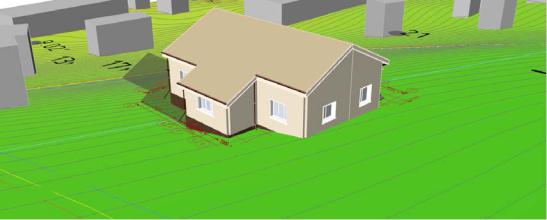
Issue № 4 (40), 2018 |
ISSN 2542-0526 |
automatic as possible, original data is constrained with a cadastral number of the area and choice of major facilities and their number in a future building. It is also possible to make use of topophotography of the area for more accurate results.
A cadastral number of an area allows one to identify the location of a designed object, automatically obtain information on the relief (if there is no topophotography), climate and insolation as well as buildings and structures in the vicinity.
Choice of facilities is constrained with a number of bedrooms and a set of extra premises (a library, a garage, a sauna, etc.). A combination of chosen facilities is analyzed by means of an algorithm and based on the resulting information, a list of future premises is designed. Based on the number of the chosen rooms, sizes of a location and its relief, there is a certain coefficient of the area of a building that the sizes of designed rooms as well as extra premises (closets for each bedroom, toilets, etc.) depend on. They get an extra set of certain characteristics including the following elements: a range of sizes, windows, doors and their type, necessary parameters of internal microclimate and a type of finishing materials.
2. An algorithm for developing architectural solutions. At this stage an algorithm creates a functional and planning scheme between the rooms, joins them into one planning solution that further volumetric and spatial elements of a building are based on.
The mechanism of designing a plan and architecture is directly influenced by the original data collected at the first stage. Using predetermined dependencies and conditions, all parts of a building are designed: foundations, internal and external walls, shuttering, roofing, etc.
Fig. 2. Architectural solution designed with a generative designing system
Designing each element of a building has to be based on well-informed decisions. E.g., each window opening, its position and sizes are defined by the characteristics of a room where it is, its orientation to the north, south, etc. and insolation requirements for facilities [4].
111
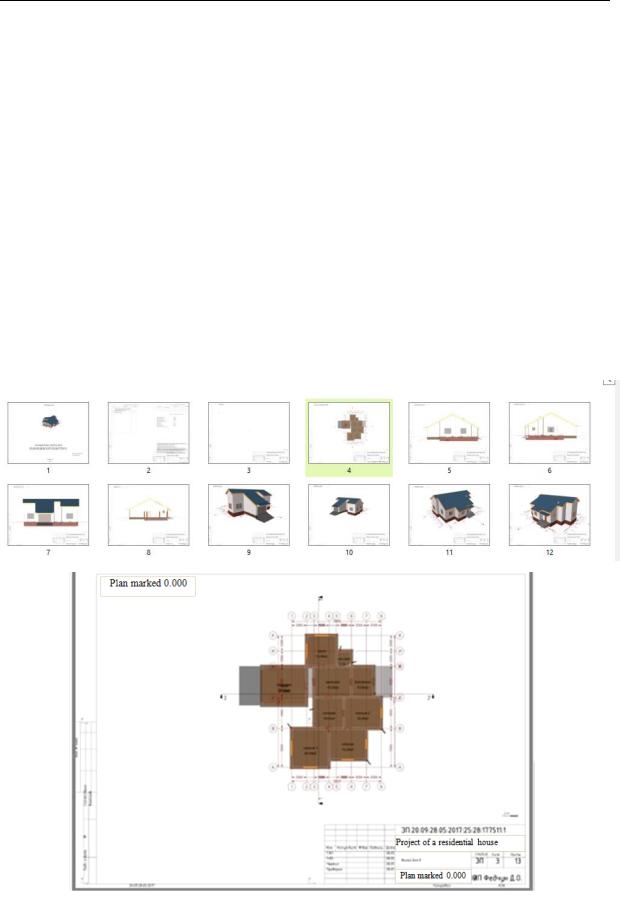
Russian Journal of Building Construction and Architecture
3. Documenting the obtained result. The last operation performed by the algorithm is creating project documentation for designed architectural solutions. There are two main operations at this stage of the algorithm:
1)designing and converting the information into textual and graphic format, forming sheet samples;
2)filling thesampleswith informationandstoringitasindividual files.
As part of the first operation following the design of volumetric and spatial solutions of the task, certain sheet samples are created. At this stage of the project development, there is only “A Project Sketch” where the following set of sheets is created: a title page, a short explanation note, floor plans (the number varies and changes dynamically), facades of a building, two cuts and general view shots (Fig. 3).
As any of the original data changes, so do a volumetric and spatial solution and thus a result-
ing architectural project.
Pages
Fig. 3. Album of architectural sketches created by the algorithm
112
Issue № 4 (40), 2018 |
ISSN 2542-0526 |
2. Comparison of the performance with original data for information, parametric and generative method of design. Collecting and analyzing original design data is an important stage in developing an architectural project as it is at this stage that a foundation for future project solutions is laid and its overall quality heavily depends on the information collected. Different designing methods prioritize data use differently. The use of geodata of designing areas is necessary for any designing method since demographic or sociological data in information designing (based on the BIM technology) often have a low priority and are thus not employed.
While developing a project by means of the information method, data can be classed into two categories: necessary ones (data on an area, technical designing task, etc.) that are integral to an architectural project and extra ones that can be made use of depending on a designer’s qualification and expertise, time constraints and a degree of the development of particular design solutions (insolation data, climatology, analysis of surrounding construction work, transportation, etc.). The reason for this sort of information not being completely used is that collecting and analyzing this data manually is rather time-consuming.
The basis for the parametric approach to building design is collecting and analyzing maximum amount of different information that can further be used for designing project solutions based on it. Parametric designing involves collecting and processing a large amount of information on the specifics of a building and its individual interpretation by a designer (Fig. 4). Systems of collecting and structuring original data include automatic and manual methods. This information set encompasses the following databases: economic, social, demographic, political, topographical, climatic as well as other characteristics of a designing location, engineering and transport infrastructure, construction morphology [9, 11—12].
Collecting a dataset |
Processing |
Results |
|
|
|
|
|
–– Social data |
–– Data analysis |
–– Complex of parametric models |
|
–– Ethnography of a location |
–– Conceptual designing |
of the same object |
|
–– Political factors |
–– Sketch designing |
–– Architectural and construction |
|
–– Climatology |
|||
–– Working designing |
documentation of a building |
||
–– Engineering communications |
|
||
–– Economic factors |
|
|
|
–– Transport infrastructure |
|
|
|
–– Environment analysis |
|
|
|
–– Geodesic and geological data |
|
|
|
and some other characteristics |
|
|
Fig. 4. General scheme for the parametric designing method
113

Russian Journal of Building Construction and Architecture
For the generative designing method to perform well, it is necessary that there was a sufficient amount of original information used by the system. Data that can be collected as automatically as possible is given top priority. This allows a large amount of information to be used in designing, which enables a project to be obtained which considers a maximum number of possible factors that are challenging to use by means of traditional designing methods (Fig. 5).
The advantages of this designing method are a multiple reduction in designing times, growing detail and quality owing to automatic use of a maximum possible amount of data that can be added manually.
Collecting a dataset |
|
Processing |
Results |
|
|
|
|
–– Social data |
|
–– Processing of the original data |
–– Architectural and construction |
–– Ethnography of a location |
|
and designing an architectural solu- |
documentation of a building |
–– Political factors |
|
tion by means of a generative de- |
|
–– Climatology |
|
signing system |
|
–– Engineering communications |
|
|
|
–– Economic factors |
|
|
|
–– Transport infrastructure |
|
|
|
–– Environment analysis |
|
|
|
–– Geodesic and geological |
data |
|
|
and some other characteristics |
|
|
|
|
|
|
|
Fig. 5. General scheme of the generative designing method
By using a system of generative designing, we obtain a new approach to creating and justifying suggested project solutions stemming from a variety of social and economic, technical and other factors, connection with a location and historic characteristics. This allows automation of design and thus boosting the productivity of project solutions [8, 9].
3. Comparing the methods of forming volumetric and spatial solutions for the information, generative and parametric design. Information designing is currently one of the most common methods in architectural designing. It is due to the fact that this system of project development can be utilized through its entire span –– from a sketch to construction documentation, equipment, operation and subsequent re-equipment or dismantling. An information model being designed includes all the data on architectural and construction solutions, economic and technical aspects of a building as well as interactions and dependencies (Fig. 6). A building in this designing model is viewed and designed as a single object with no divides between architectural and construction solutions and engineering systems [7].
114
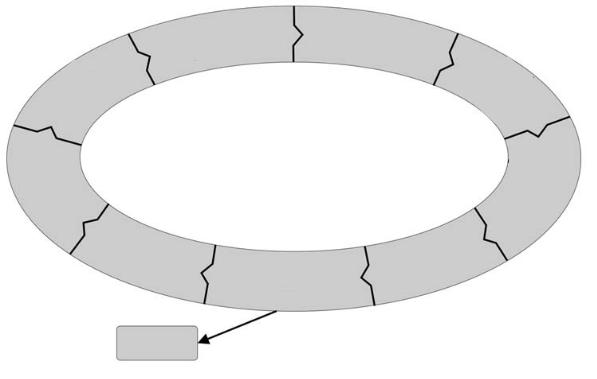
Issue № 4 (40), 2018 |
ISSN 2542-0526 |
A feature of this designing method is creating a shared information database where each element of a building has a set of major characteristics and extra stands. A change in the properties or size of one associated with another causes an automatic correction of the remaining elements, change of all the sketches as well as specifications and visualizations [12].
A flipside of the information designing method is a direct dependence of the design quality and experience of architects utilizing the technology. In order to take advantage of all the positive aspects of the information model, a long-term special training is required. This restriction prevents the technology from being fully exploited as there are no objects to be designed, which might lead to direct losses and other associated issues at the time of construction and operation.
|
|
Creating a detailed project |
Analyzing the result |
|
|||
Creating |
|
|
|
|
|
|
Creating |
|
|
|
|
|
|
working |
|
acon- |
|
|
|
|
|
|
|
|
|
|
|
|
|
documen- |
|
ceptual |
|
|
|
|
|
|
|
|
|
|
|
|
|
tation |
|
project |
|
|
|
|
|
|
|
|
|
|
|
|
|
|
|
|
|
|
|
|
|
|
|
Collec- |
|
INFORMATION MODEL |
|
||||
|
|
OF A BUILDING |
|
Manufac- |
|||
ting |
|
|
|
||||
original |
|
|
|
|
|
|
turing and |
|
|
|
|
|
|
delivering |
|
data |
|
|
|
|
|
|
|
|
|
|
|
|
|
building |
|
|
|
|
|
|
|
|
|
|
|
|
|
|
|
|
materials |
|
Reconstruction |
|
Construction and |
|
|||
|
|
|
Operation |
|
assembly operations |
|
|
|
|
|
of an object |
|
|
|
|
|
|
|
|
|
|
|
|
Dismantling
Fig. 6. General scheme of an information model
The parametric designing method employs another model of organizing design: it is based on combining different software and creating some segmented models that are further joined into one common file [16, 17]. For making changes to a project it is necessary to go back to the level of a model fragment. At different design stages various software packages are utilized: for three-dimensional modeling such as Autodesk Maya or Autodesk 3DS Max, at the stage of the development of a parametric model a project is transferred into Grasshopper or other similar visual programming products, then at the stage of designing documentation standard programs such as Autodesk Autocad or Revit are employed.
115
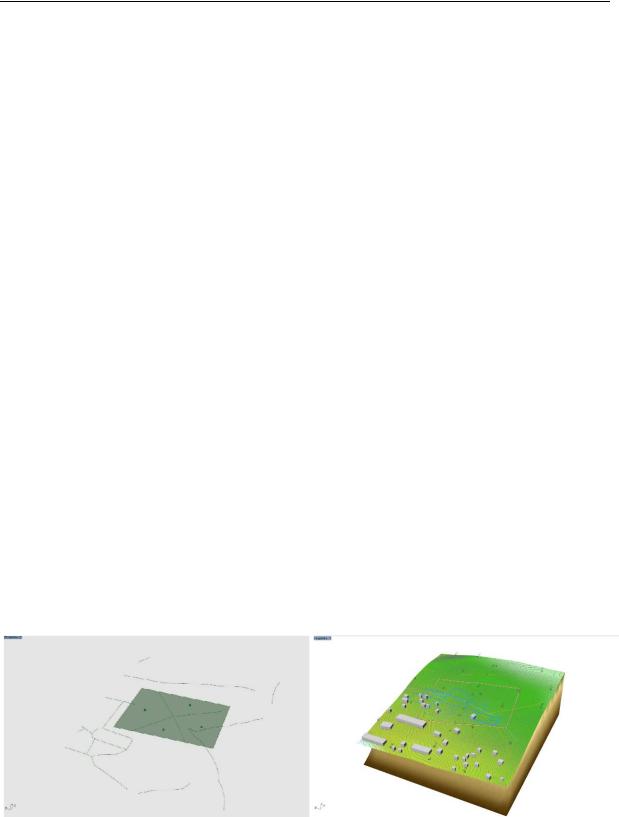
Russian Journal of Building Construction and Architecture
The most prominent feature of the method of parametric designing that sets it apart from information designing is that for handling each specific task a particular software is utilized and models are all joined together only to create a final-end project (see Fig. 4).
The generative designing method includes the most effective solutions from the information and parametric designing methods. The foundation of designing is creating a common algorithmized information model of a building. It includes scripts and algorithms that repeat the way a building is designed by an architect but do it automatically. A project is created according to the deductive principle: a general situation is investigated, location of a building and its relief, a general planning structure is designed which is used to create a volumetric and spatial solution of a building and as a result, project documentation is developed.
There are several ways of creating a planning structure: evolutional (mathematical) and physical [14, 15, 21]. The first one relies on a mathematical model that creates a population of solutions and using an analyses, it selects those that meet the specified criteria as much as possible [5]. The second method is to create a physical model of a building that is formed by means of physical effects of colliding, gravitation and repulsion of objects resulting in an overall structure of a building. In this example the second method is employed [18—21].
Creating a volumetric and spatial solution takes three main stages.
1. Analyzing the relief of an area and choosing the most optimal one as a building location. For that purpose, a toposurface is fragmented into segments according to its orientation to the north, south, etc (considering the distance to the objects surrounding the area, passageways and urbanplanning constraints) and an extra analysis of its relief is conducted. The results of the analyses performed by means of an algorithm are a point of a future building location (Fig. 7).
Fig. 7. Аnalysis of the relief of an area and choice of the most optimal one for a building location
2. Creating a planning solution. For that, a point is used that is found at the first stage. The algorithm forming the plans of a building uses two phases in its operation: creating a concep-
116
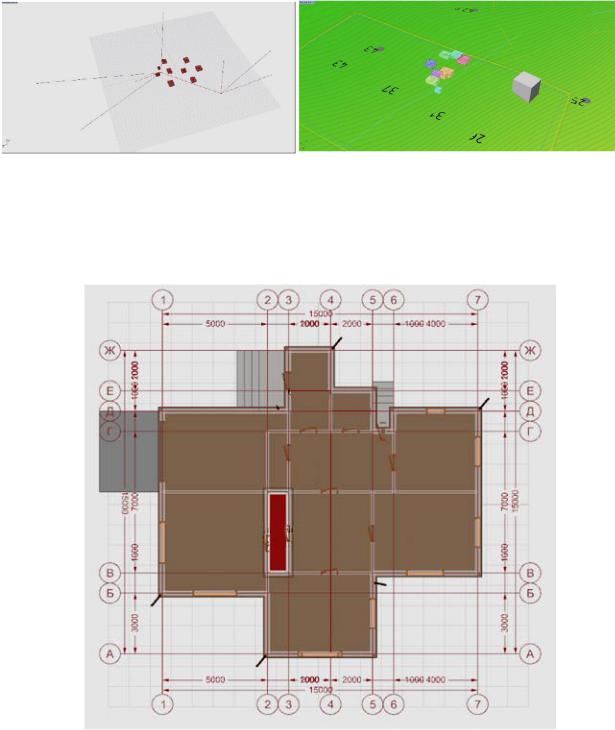
Issue № 4 (40), 2018 |
ISSN 2542-0526 |
tual structure of a volumetric and spatial solution and a detailed plan. The first phase operates by means of two abstract primitives: lines and parallelepipeds. At the second one, walls, shuttering, windows, doors and other elements of the plan are designed.
For the first stage a general functional scheme of how the rooms are connected is created and their primitives are designed and joined into one common structure (Fig. 8).
Fig. 8. Creating functional connections of the rooms and a common planning structure
The second phase is creating a volumetric and spatial solution for the resulting structure using the preliminarily specified criteria and conditions (Fig. 9).
|
|
Boiler |
Bath- |
|
|
|
|
room2 |
room |
|
|
|
|
7.06 m |
3.42m2 |
|
|
Garage |
|
Hall |
Kitchen |
||
22.53 m2 |
|
17.06 m2 |
14.78 m2 |
||
|
Sto- |
|
|
|
|
|
ra- |
|
|
Bedroom 3 |
|
|
ge |
Hall |
|||
|
3.5 |
2 |
|||
Bedroom 3 |
15.20 m2 |
18.67 m |
|||
2 |
|||||
23.52 m2 |
m |
|
|
|
|
Bedroom 2
18.52 m2
Fig. 9. Designing a volumetric and spatial solution using the resulting structure
117

Russian Journal of Building Construction and Architecture
3. Designing architectural and construction solutions. At this stage, the remainder of the elements of a building is designed: roofing, foundation, engineering systems, etc. Each element at this stage is modeled based on the system of the parameters and a set of formulas. E.g., a roofing system is formed by means of analyzing a planning structure, climatic factors and location of a building in the area (Fig. 10).
Fig. 10. Architectural solution designed by means of the algorithm
The method of generative designing allows an aesthetic model of a project to be created where rationality, mathematics and analysis of designing conditions underlie the exterior of a building. This property makes it different from information and parametric designing models where the exterior of a building is defined by an architect or a group of designers based on their personal tastes, expertise and skills. Using the generative methods, what an individual does is to specify a set of the parameters and a system of their use where an algorithm forms the aesthetics of a building and its characteristics depends on the amount of factors that affect the exterior of a designed object.
4. Comparison of economic aspects of parametric, information and generative designing methods. The designing stage in the total structure of construction costs accounts for less than 5 %, but the total economic losses caused by errors and mistakes made in the process of architectural designingcanbesignificantlyhigherduetoincreasingestimatedconstructioncosts[3].
118
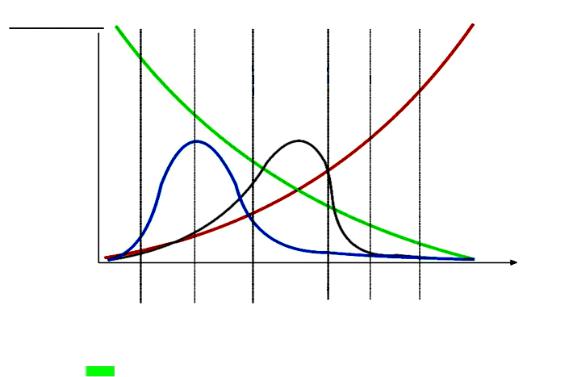
Issue № 4 (40), 2018 |
ISSN 2542-0526 |
According to the data by the company Autodesk [6—7], a considerable proportion of Russia’s construction companies would incur an almost 20 % rise in construction costs compared to the one estimated prior to the construction. Overall, an average difference between estimated and actual costs might be as high as 50 %.
The main cause is due to the discrepancies between building structures and engineering networks that inadvertently lead to costly corrections and longer construction times. One of the most common mistakes is that there are no technological gaps for engineering systems, erroneous calculations of the volume of work and amount of materials. Mistakes occur as a result of inconsistencies, no interactions between the architects, designers and engineers working on different parts of a project. The solutions they come up with might turn out to be inconsistent and contradictory. In practice, it is rather challenging to find this sort of mistakes in 2D sketches (Fig. 11).
Resource costs |
|
|
|
Results |
The later inconsistencies are found, |
|
|
|
the more it is going to cost to have |
|
|
|
them corrected |
Stages of the life cycle of a building
Prepara- |
|
|
|
|
|
|
|
|
|
|
|
Operation of |
|
Sketch |
|
|
Construc- |
||||||||
|
|
|
|
Stage “Work- |
||||||||
|
|
Stage |
|
|
Con- |
|||||||
tions prior |
|
designing |
|
“Project” |
|
ing documen- |
|
struction |
|
tion and |
|
a building |
to the start |
|
|
|
|
|
tation” |
|
organiza- |
|
assembly |
|
|
of a project |
|
|
|
|
|
|
|
tion |
|
|
|
|
|
|
|
|
|
|
|
|
|
|
|
|
|
Fig. 11. Graph of resource costs and stages of a life cycle of a building:
is a likelihood of changes;  are costs of making changes;
are costs of making changes;
 is an activity peak for traditional designing;
is an activity peak for traditional designing;  is mistake detection in the process of information designing at different stages of a project
is mistake detection in the process of information designing at different stages of a project
The advantage of the information designing method is a common model for all the specialists involved in a project and room for collaboration [2]. The technology allows the entire designing process, i.e. from the concept to working documentation, to be conducted in one file with
119

Russian Journal of Building Construction and Architecture
constant control over detail and changes made by other specialists. This enables errors and mistakes to be identified at early stages, which considerably reduces their correction costs. Nevertheless this kind of organization of a model makes it more complicated to make use of non-traditional solutions due to unification and constraints of forming shapes for supporting a large number of specialists from a variety of fields.
The parametric method of designing relies on a project model that is created using specialized submodels [22]. This approach to organizing a model involves decomposition of a designed object into different subsystems given structural and functional connections and designing a common hierarchy between them. Decomposition of design leads to its representation as a set of more simple designing procedures at different levels of a hierarchy [13]. Eaсh procedure employs its own software set to allow for a more detailed handling of a designed object and non-traditional solutions which are not constrained with a general model, which is the case for information designing.
Conclusions. Information and parametric designing methods are characterized by shared advantages and disadvantages. A positive point is that there can be as many specialists working on a project as necessary, which is organized and controlled by a single system. A downside is high costs for design organization which utilizes a whole variety of specialized software products as well as high requirements for the qualifications of specialists employing the above methods. The major economic effect of the use of these methods is a lower amount of mistakes and inconsistencies of solutions in working documentation due to a common model of a designed object, which allows financial construction costs to be reduced.
The method of organizing generative designing is based on another approach to models. It relies on development of a common system consisting of a set of algorithms [13] and utilizes another organizational structure for designing a project of a building. Designers work on creating system conditions and regulations to be further employed for architectural solutions. Then it is possible to develop building projects only by making changes to original data. By spending a large amount of time at the outset of a project, this organization of designing allows construction times for buildings of one category to be significantly reduced. For the author’s very own generative designing system considered in the research paper it took a year of development and 10 minutes for each new iteration that leads to a new project. Further attempts at improving the system will be focused on the major algorithms, original data and quality of project solutions.
Comparing the methods of parametric, information and generative design methods was necessary for identifying the main directions and methods of developing a designed generative sys-
120
